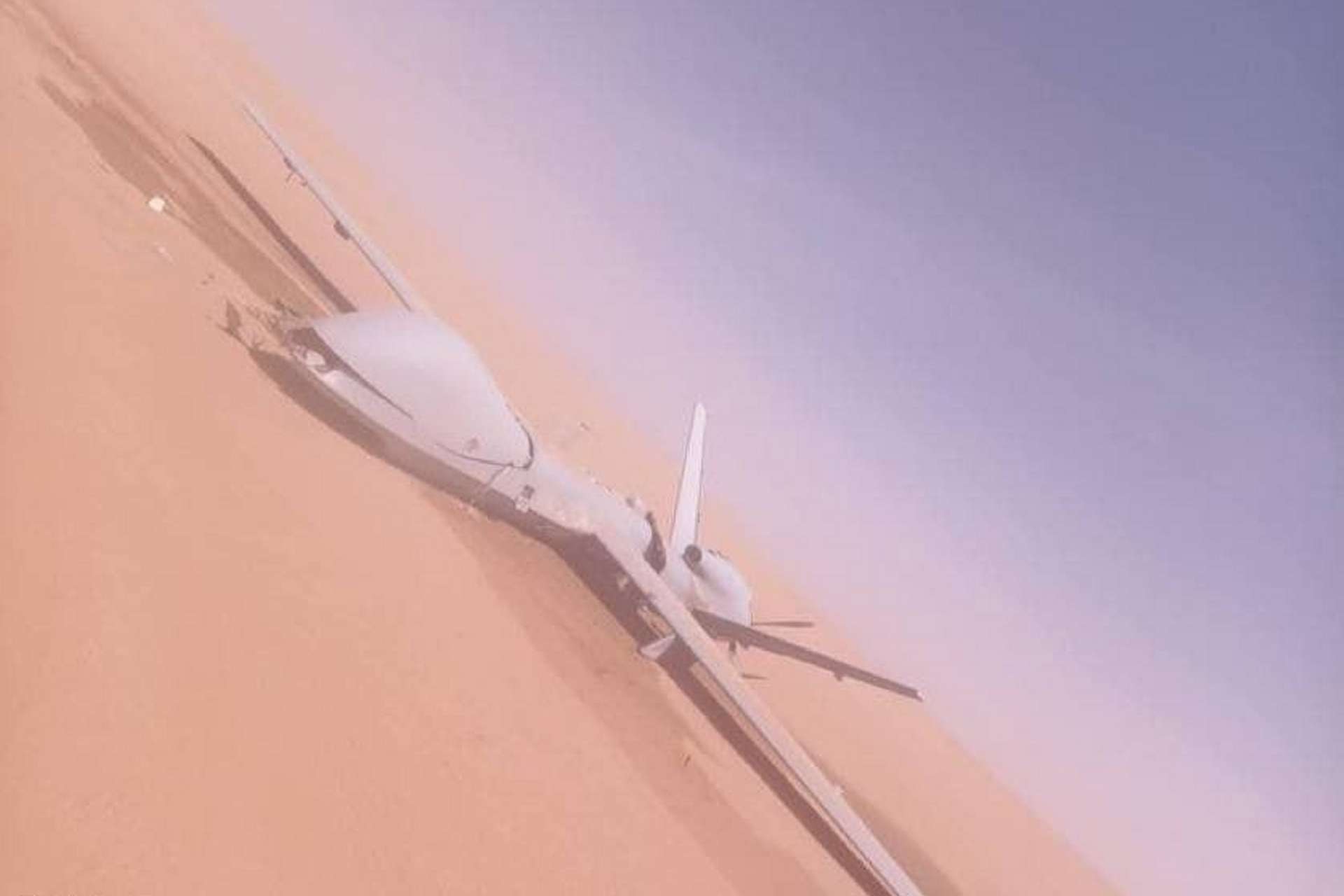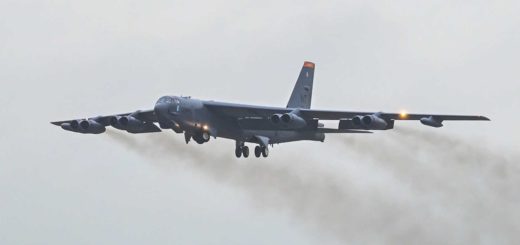Iran may receive a virtually intact American MQ-9 Reaper drone through Yemen’s Houthis

{loadposition bannertop}
Breaking news
{loadposition sidebarpub}
On May 29, 2024, a US Air Force MQ-9 Reaper reconnaissance and strike UAV fell into the hands of Iranian-backed Houthi militants in Yemen, virtually undamaged. This event raises concerns that the drone might be transferred to Iran for examination. If confirmed, this incident would mark the sixth MQ-9 Reaper shot down by the Houthis, underscoring a significant pattern in U.S. operations in the region. Over the past two months alone, the Houthis have downed three American MQ-9 drones, indicating an escalation in their capabilities.Follow Army Recognition on Google News at this link
google_ad_client = “pub-4068738923530102”;
/* 468×15 data sheet menu top dark green */
google_ad_slot = “3500417247”;
google_ad_width = 468;
google_ad_height = 15;
// ]]>
google_ad_client = “pub-4068738923530102”;
/* top_468x60_fiche_technique */
google_ad_slot = “2746785843”;
google_ad_width = 468;
google_ad_height = 60;
// ]]>
Over the past two weeks months alone, the Houthis have downed three American MQ-9 drones, indicating an escalation in their capabilities. (Picture source: Russian social media)
The latest incident suggests that the MQ-9 drone made a hard landing, possibly due to being hijacked or having its GPS coordinates spoofed to force it to land. This follows a similar event on May 17, 2024, when the air defense branch of the Ansar Allah movement, known as the Houthis, successfully shot down another American MQ-9 Reaper UAV in Yemen’s northeastern province of Marib. Unlike the previous incident, where the wreckage was burned by the inhabitants of Wadi Marib before loyalist army units arrived, this time, the wreckage remained intact.
Prior to this, at least five other U.S. drones had been downed by the Houthis. These incidents include an MQ-9 Reaper shot down on June 7, 2019, by a surface-to-air missile; another on November 1, 2017, in western Yemen; an MQ-9 reported downed in August 2023; another shot down on April 25, 2024, over Saada province; and finally, an MQ-9 in the same northeastern Yemeni province of Marib. Additionally, a ScanEagle drone was downed in 2023. The cumulative value of these downed drones, including the latest MQ-9 Reaper, is approximately $183.2 million, with each MQ-9 Reaper valued at $30 million and the ScanEagle drone worth $3.2 million.
The potential transfer of the MQ-9 drone to Iran for study is a notable concern. If this occurs, Iran could gain insights into American drone technology, including advancements in remote piloting, surveillance capabilities, and payload systems. Access to the MQ-9 Reaper’s sophisticated sensor suite and communication links could enable Iran to enhance its UAV capabilities, potentially leading to improvements in their drone designs and counter-drone measures. This transfer could also provide Iran with intelligence on how to better defend against or disrupt American and allied UAV operations in the region.
The MQ-9 Reaper, introduced on May 1, 2007, is a multi-role, remotely piloted aircraft system used by the US Air Force for intelligence, surveillance, reconnaissance (ISR), and precision strike missions. It features sensors including infrared, daylight TV, and laser designators, and can carry up to 1,700 kg of payload, including Hellfire missiles and laser-guided bombs. The Reaper can operate at altitudes up to 50,000 feet and has a range of over 1,900 kilometers. It is remotely controlled and offers a cruise speed of 313 km/h, powered by a Honeywell TPE331-10 turboprop engine generating 900 hp.
The drone shootdown is part of a broader strategy by the Houthis, which includes launching attacks on shipping in the Red Sea and Gulf of Aden. These actions reportedly aim to pressure Israel over the conflict in Gaza, which has resulted in significant casualties and heightened regional tensions. The Houthis have conducted over 50 attacks on shipping since November, including seizing and sinking vessels. The increasing sophistication of their missile attacks, likely supplied by Iran, poses a growing threat to regional stability and U.S. interests. The U.S. military has conducted airstrikes against Houthi targets in Yemen to address these threats, but the frequency of drone and missile attacks by the Houthis has not significantly diminished.

{loadposition bannertop}
Breaking news
{loadposition sidebarpub}
On May 29, 2024, a US Air Force MQ-9 Reaper reconnaissance and strike UAV fell into the hands of Iranian-backed Houthi militants in Yemen, virtually undamaged. This event raises concerns that the drone might be transferred to Iran for examination. If confirmed, this incident would mark the sixth MQ-9 Reaper shot down by the Houthis, underscoring a significant pattern in U.S. operations in the region. Over the past two months alone, the Houthis have downed three American MQ-9 drones, indicating an escalation in their capabilities.
Follow Army Recognition on Google News at this link
/* 468×15 data sheet menu top dark green */
google_ad_slot = “3500417247”;
google_ad_width = 468;
google_ad_height = 15;
// ]]>
/* top_468x60_fiche_technique */
google_ad_slot = “2746785843”;
google_ad_width = 468;
google_ad_height = 60;
// ]]>
Over the past two weeks months alone, the Houthis have downed three American MQ-9 drones, indicating an escalation in their capabilities. (Picture source: Russian social media)
The latest incident suggests that the MQ-9 drone made a hard landing, possibly due to being hijacked or having its GPS coordinates spoofed to force it to land. This follows a similar event on May 17, 2024, when the air defense branch of the Ansar Allah movement, known as the Houthis, successfully shot down another American MQ-9 Reaper UAV in Yemen’s northeastern province of Marib. Unlike the previous incident, where the wreckage was burned by the inhabitants of Wadi Marib before loyalist army units arrived, this time, the wreckage remained intact.
Prior to this, at least five other U.S. drones had been downed by the Houthis. These incidents include an MQ-9 Reaper shot down on June 7, 2019, by a surface-to-air missile; another on November 1, 2017, in western Yemen; an MQ-9 reported downed in August 2023; another shot down on April 25, 2024, over Saada province; and finally, an MQ-9 in the same northeastern Yemeni province of Marib. Additionally, a ScanEagle drone was downed in 2023. The cumulative value of these downed drones, including the latest MQ-9 Reaper, is approximately $183.2 million, with each MQ-9 Reaper valued at $30 million and the ScanEagle drone worth $3.2 million.
The potential transfer of the MQ-9 drone to Iran for study is a notable concern. If this occurs, Iran could gain insights into American drone technology, including advancements in remote piloting, surveillance capabilities, and payload systems. Access to the MQ-9 Reaper’s sophisticated sensor suite and communication links could enable Iran to enhance its UAV capabilities, potentially leading to improvements in their drone designs and counter-drone measures. This transfer could also provide Iran with intelligence on how to better defend against or disrupt American and allied UAV operations in the region.
The MQ-9 Reaper, introduced on May 1, 2007, is a multi-role, remotely piloted aircraft system used by the US Air Force for intelligence, surveillance, reconnaissance (ISR), and precision strike missions. It features sensors including infrared, daylight TV, and laser designators, and can carry up to 1,700 kg of payload, including Hellfire missiles and laser-guided bombs. The Reaper can operate at altitudes up to 50,000 feet and has a range of over 1,900 kilometers. It is remotely controlled and offers a cruise speed of 313 km/h, powered by a Honeywell TPE331-10 turboprop engine generating 900 hp.
The drone shootdown is part of a broader strategy by the Houthis, which includes launching attacks on shipping in the Red Sea and Gulf of Aden. These actions reportedly aim to pressure Israel over the conflict in Gaza, which has resulted in significant casualties and heightened regional tensions. The Houthis have conducted over 50 attacks on shipping since November, including seizing and sinking vessels. The increasing sophistication of their missile attacks, likely supplied by Iran, poses a growing threat to regional stability and U.S. interests. The U.S. military has conducted airstrikes against Houthi targets in Yemen to address these threats, but the frequency of drone and missile attacks by the Houthis has not significantly diminished.







